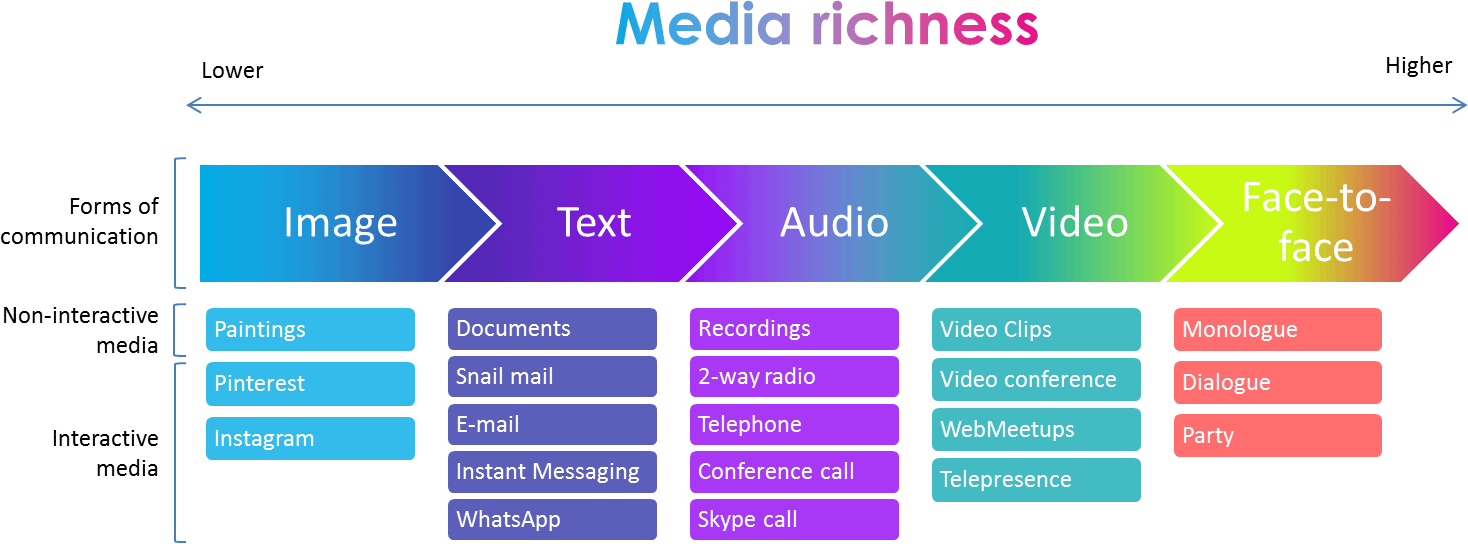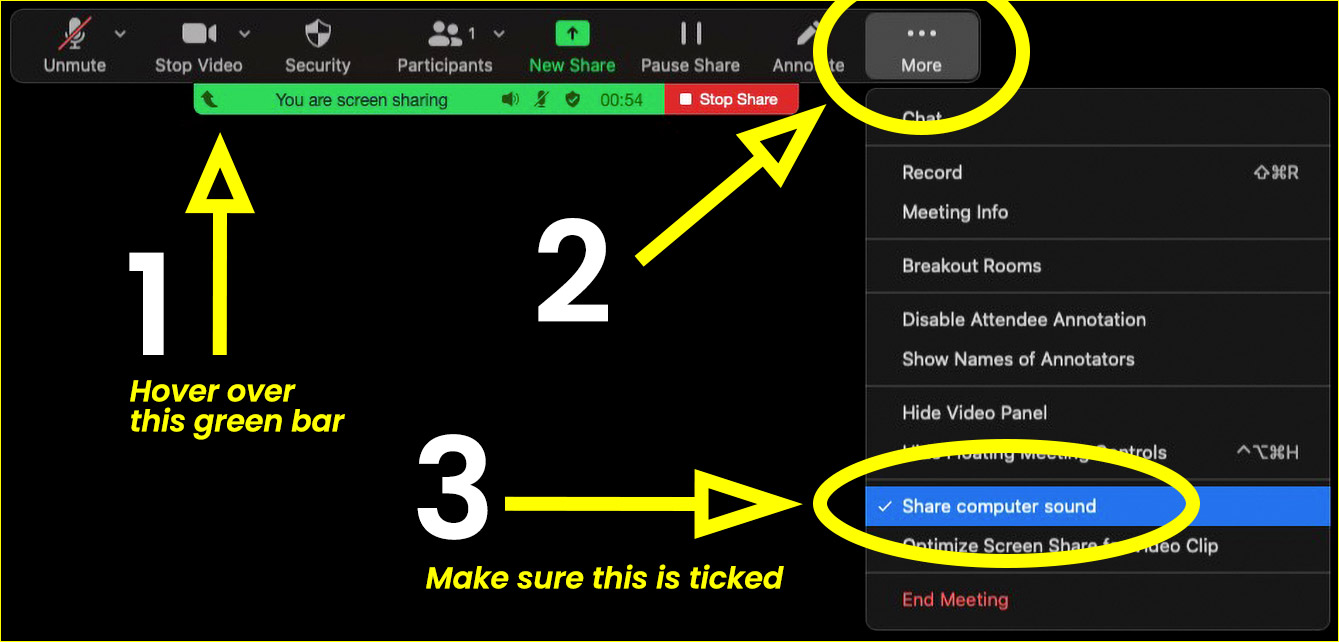

Media richness theory can be a useful tool to craft the right communication channels for your team.
As we continue to adjust and adapt our working styles with ongoing WFH arrangements, we have so many options and tools to use when it comes to communication. These tools also vary in media richness – from static images through to face to face interaction.
In our company we have talked about how we can be more mindful of what tools we are using to communicate and what is most effective given what we are trying to achieve.
Developed in 1986 as a way to measure and rank different styles of communication, the media richness theory gives us a scale of reference we can use to strategically choose how we convey certain information depending on its complexity. In general, I would argue that we do this relatively automatically as we use different media on the regular. However, I was challenged to do a mini audit of how I am using emails vs calls vs video calls. I found it useful to take a minute to consider if these were the most effective ways of communicating.
Connecting with team more richly
As a result I have found myself using the phone over email more regularly, and opting in for a video call as often as possible. A welcome side effect of this has been mini water cooler chats or incidental communication moments, as I ask my team how their days are going and probing for things that are inspiring or challenging them.
If your team is struggling with connection consider engaging with richer communication methods so that social cues, gestures, and body language are present in a conversation. Our weekly team meeting is a good example, Zoom keeps us feeling much more connected than a group email or call would.
A couple of other questions you can ask:
- Are you on the same page when it comes to communication mediums across departments?
- As a manager are you using the different tools of communication in the right way, reflecting the complexity of your message?
- Do individuals in you team respond better or worse to different mediums of communication? What gets the best and quickest response from them?

